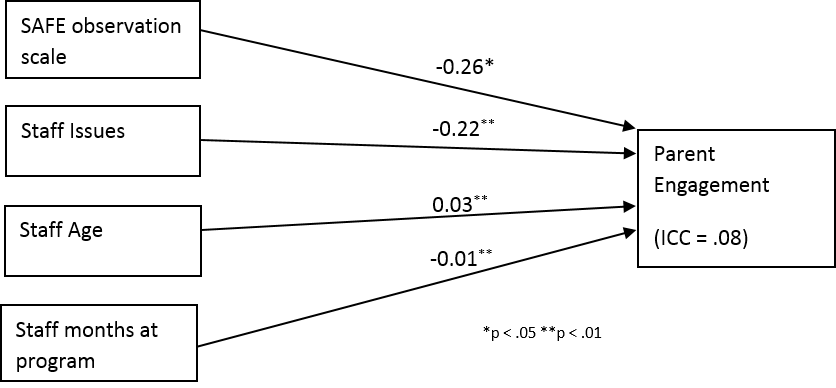Project Overview
Data for the current study were collected from parents and staff in 24 elementary after-school program sites in a large Midwestern city.
After-school program sites in the current sample serve low-income, inner-city communities. The sample includes a total of 247 parents who were asked to
complete a survey while picking up their child from the after-school program. All but three parents (.01%) agreed to participate the in the study.
The sample also includes 158 ethnically diverse program staff members (M=34.28 years old, SD=16.18; 71% female) working at the after-school programs.
Parent engagement was measured with an 18 item survey developed for this study. Additionally, teams of two trained assessors observed and
rated the quality of 156 activities
over the course of three months using the Out-of-School Time Program Observation Tool (OST; Pechman, Russell & Birmingham, 2008). These observations create a
SAFE score which measured the quality of the after school program.
The results presented below were used to examine the qualities of the after school program that predict high parent engagement.

